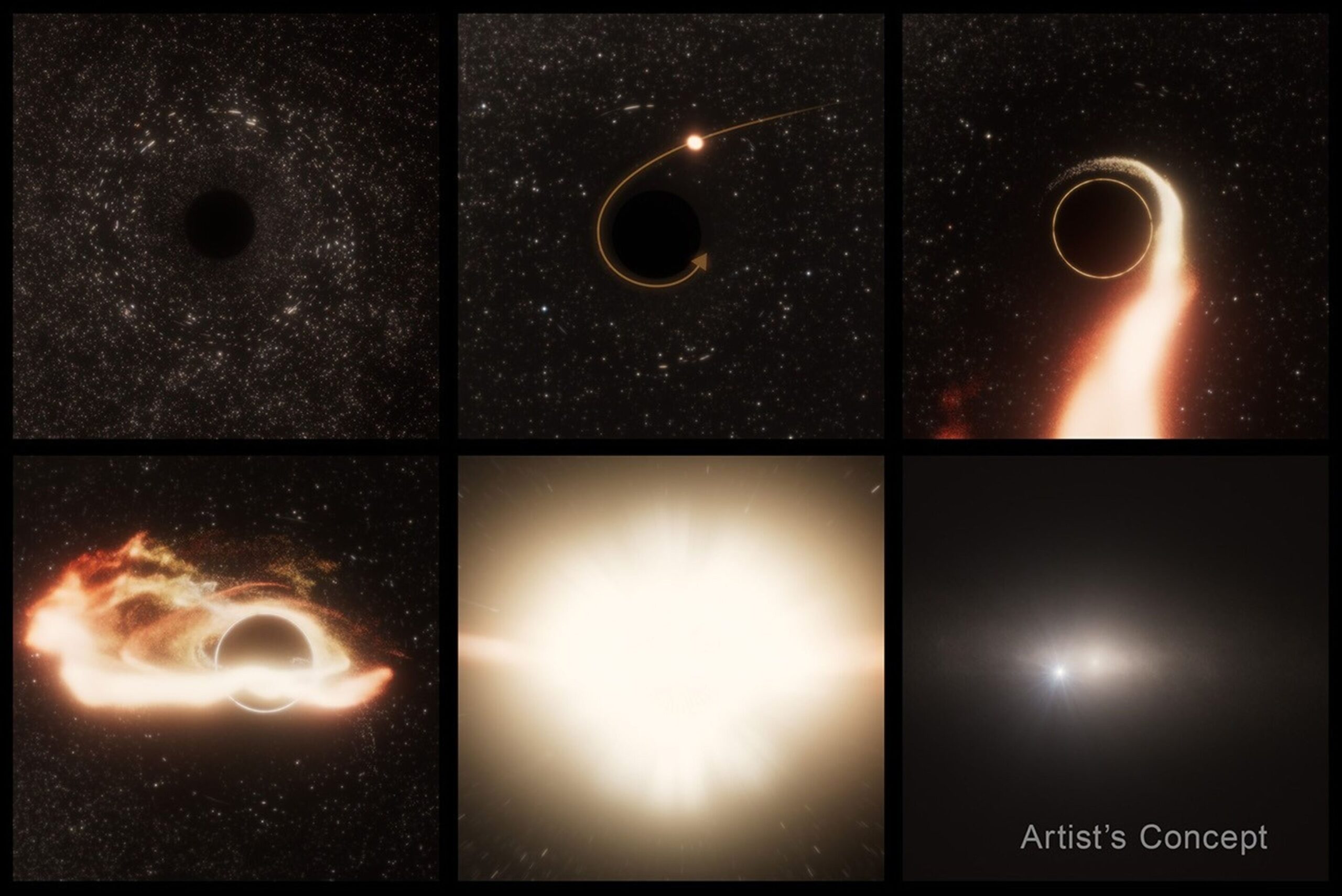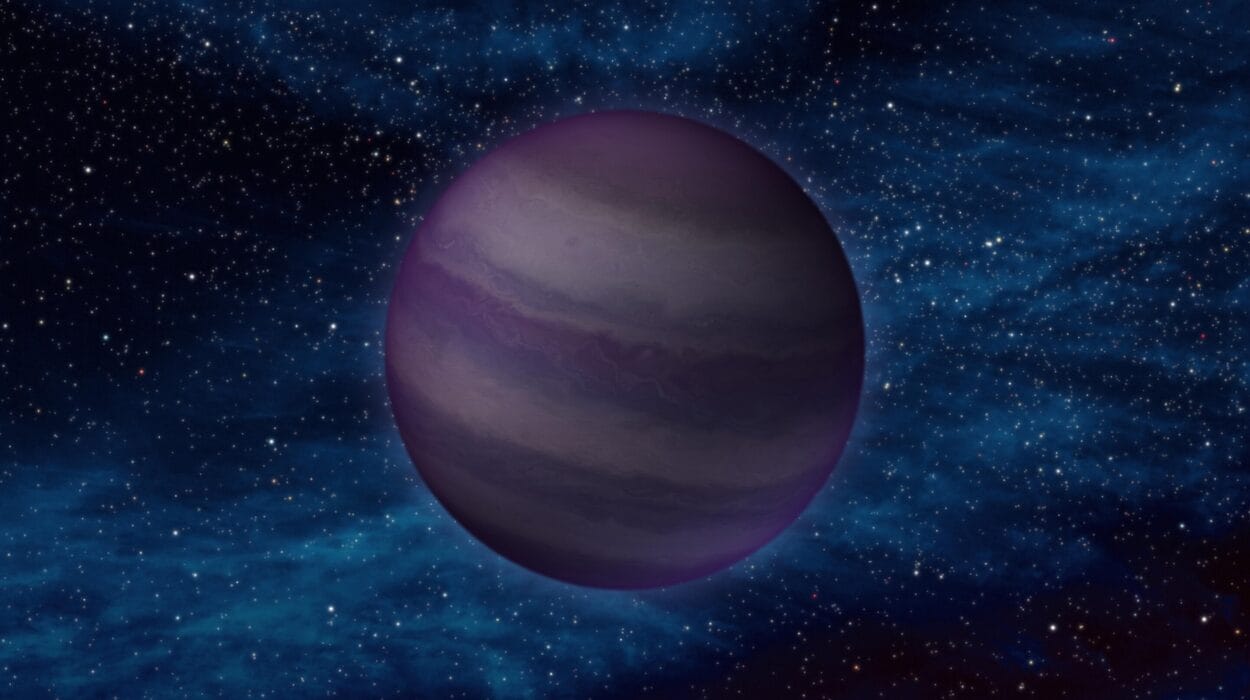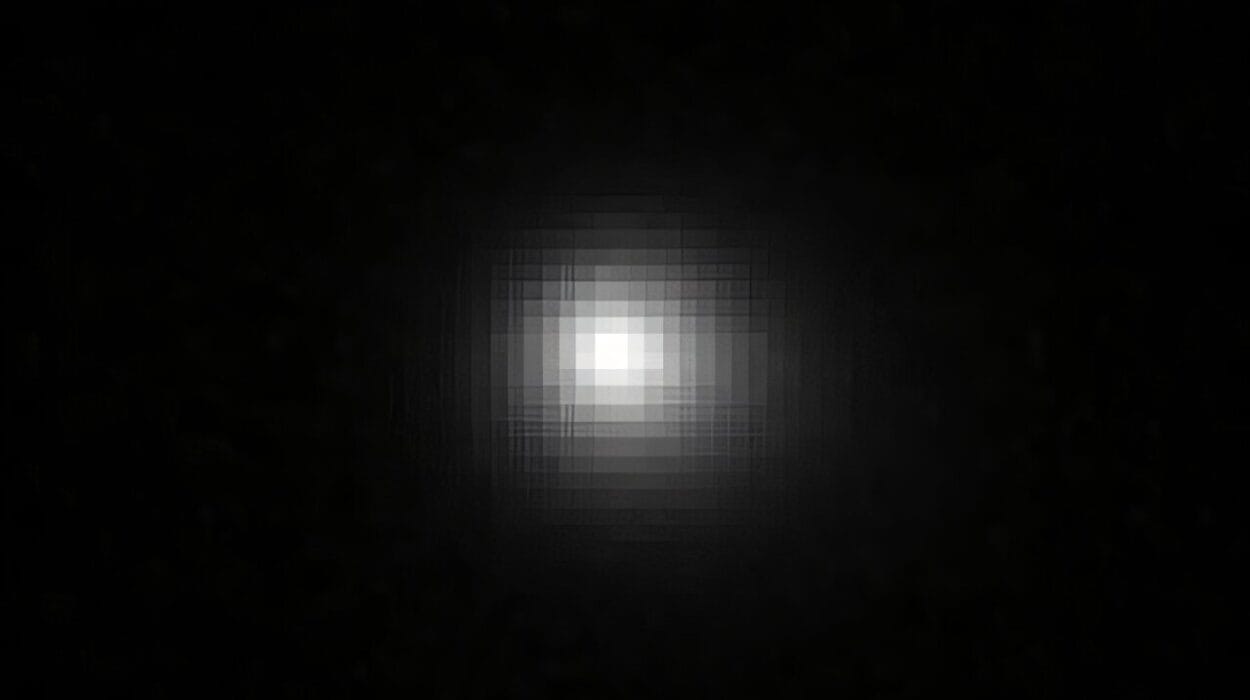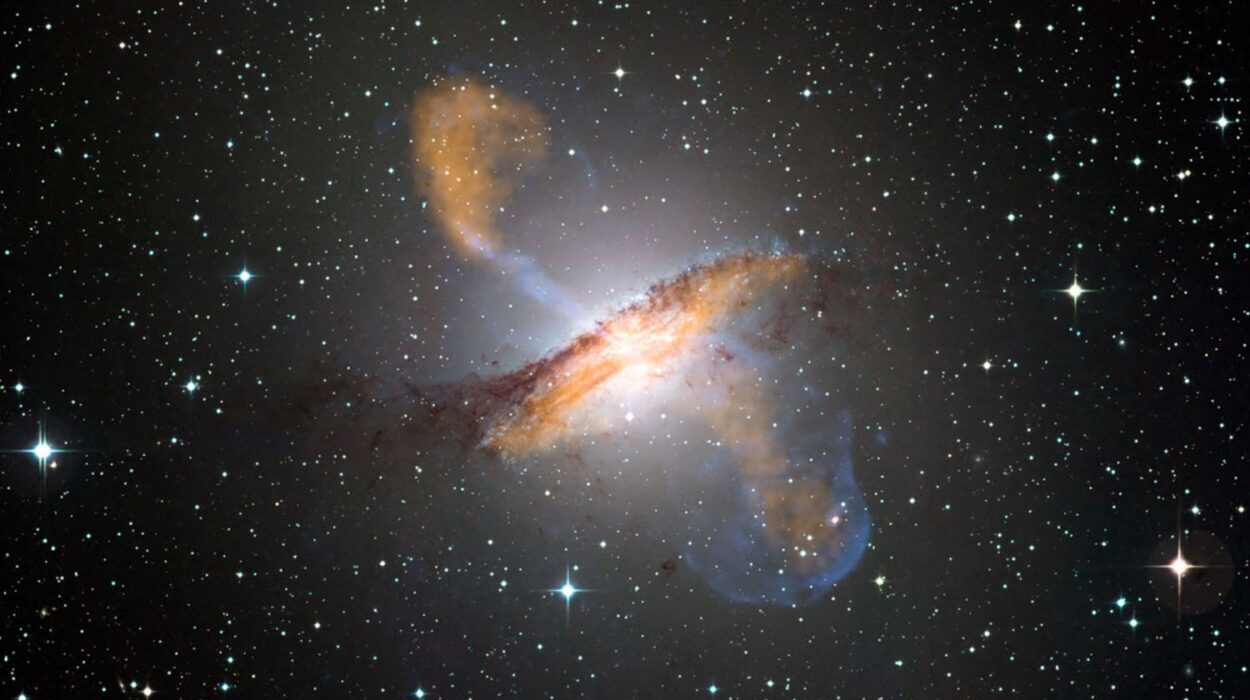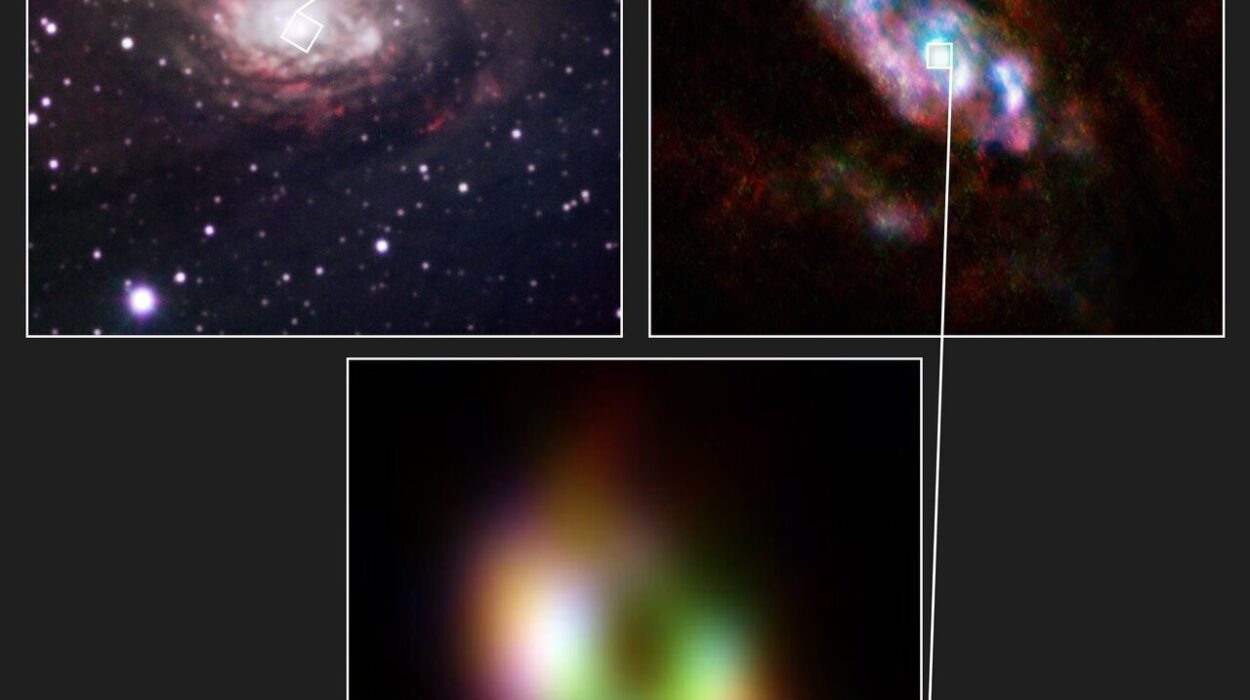It sounds like the plot of a sci-fi thriller: a lurking, invisible monster silently stalks the outskirts of a galaxy, far from its core, waiting for an unsuspecting star to wander too close. And when it does—bam! The star is torn apart, consumed in a violent act of cosmic cannibalism. But this is no fiction. It’s the real drama unfolding in the cosmos. Using some of NASA’s most powerful telescopes, astronomers have uncovered an astonishing cosmic phenomenon—a rogue supermassive black hole devouring a star in an event so extreme it lit up the universe with a blinding flare of radiation. They’ve nicknamed it “Space Jaws,” and it’s just as terrifying as it sounds.
A Rare Cosmic Crime Scene
The phenomenon, known as a tidal disruption event (TDE), occurs when a star gets too close to a black hole and is violently shredded by its immense gravitational forces. The star’s remains spiral into the black hole, releasing an extraordinary burst of light across the electromagnetic spectrum. But what makes this discovery particularly groundbreaking is not just the gruesome fate of the star—it’s where the event took place.
The TDE, named AT2024tvd, was detected in a surprising location—2,600 light-years away from the center of its host galaxy. This is completely atypical. Nearly all previously recorded TDEs—about 100 known to date—have originated from the very hearts of galaxies, where massive black holes usually dwell. But this one is different. The culprit here is a wandering supermassive black hole, weighing in at about 1 million times the mass of our Sun, casually roaming the galaxy’s outskirts like a cosmic predator.
A Tale of Two Titans
Even more astonishing is that this galaxy already has a colossal supermassive black hole—100 million solar masses strong—anchored at its center, behaving as expected by feeding on gas and dust while blazing with energy as an active galactic nucleus. But this second, smaller black hole? It’s an uninvited guest.
The Hubble Space Telescope’s precision optics and ultraviolet sensitivity revealed the exact location of the flare caused by the TDE, confirming the black hole’s unexpected position. Meanwhile, data from NASA’s Chandra X-ray Observatory and the NRAO’s Very Large Array radio telescope supported the finding, identifying high-energy emissions offset from the galactic center.
It’s as if the galaxy houses two beasts, one in its throne room and one skulking in the shadows.
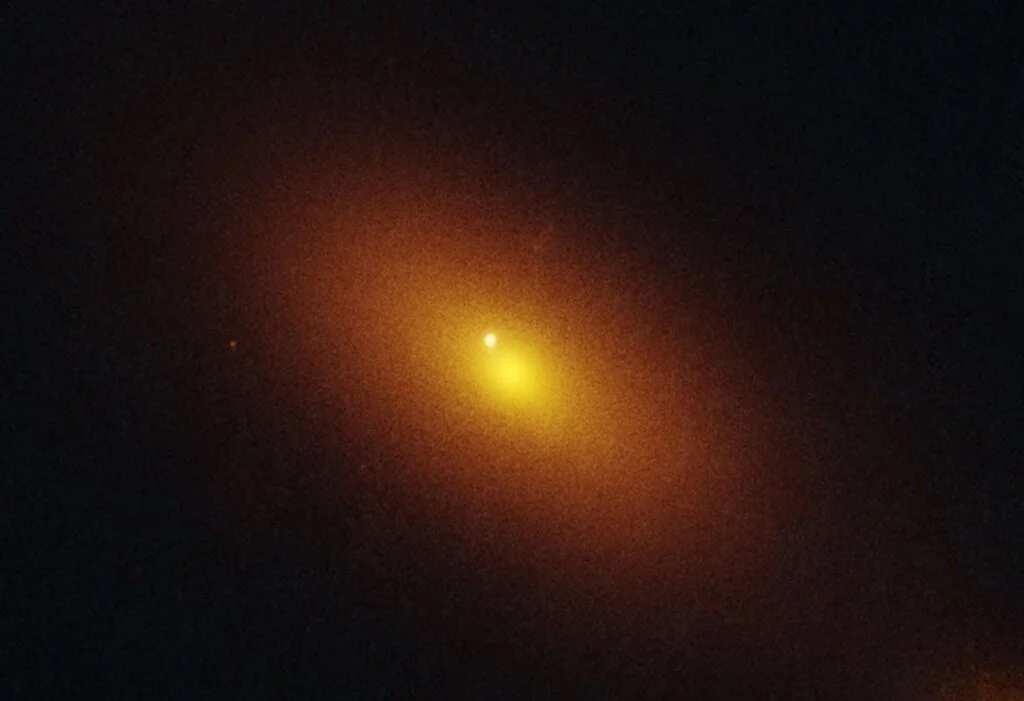
How Did It Get There?
The existence of such a rogue black hole raises fundamental questions. What is it doing there? How did it get displaced from the galactic center?
One leading theory involves a gravitational three-body interaction—a cosmic tug-of-war between three black holes in the galaxy’s core. In such scenarios, the lightest of the trio can get gravitationally “kicked” and flung away from the center, becoming a wandering outlier still bound to the galaxy’s gravity but no longer centrally located.
Another possibility is that this black hole is the remnant of a smaller galaxy that once merged with the larger host. During such galactic mergers—common in the chaotic history of the cosmos—central black holes can survive and linger, like ghostly relics from a past cosmic union.
Despite extensive analysis of Hubble images, no direct evidence of a merger was found—no telltale tidal streams or disrupted stellar formations. Still, the presence of two massive black holes implies a violent event in the past. “There is already good evidence that galaxy mergers enhance TDE rates,” explained Dr. Erica Hammerstein, a co-author on the study. “So while we can’t see the remnants of the merger, the fact that there are two black holes in this galaxy is already a strong clue that it happened.”
Star on the Menu
When the rogue black hole feasted, telescopes across the Earth and sky took notice. The Zwicky Transient Facility (ZTF) at Caltech’s Palomar Observatory first caught the dramatic flare, which shone as brightly as a supernova. But astronomers quickly realized it wasn’t a dying star exploding from within—it was one being murdered from without.
What made it clear that this was a TDE were the spectral fingerprints of the flare. Broad emission lines of hydrogen, helium, carbon, nitrogen, and silicon streamed out in the light, alongside extremely hot temperatures, distinguishing the event from other bright astronomical phenomena like supernovae.
“Tidal disruption events hold great promise for illuminating the presence of massive black holes that we would otherwise not be able to detect,” said Dr. Ryan Chornock of UC Berkeley. “Theorists have predicted that a population of massive black holes located away from the centers of galaxies must exist, but now we can use TDEs to find them.”
A Cosmic Needle in a Haystack
Indeed, AT2024tvd is the first offset TDE discovered through wide-field optical sky surveys. Thanks to the precision of modern instruments, especially Hubble’s ultraviolet imaging and Chandra’s X-ray detection, astronomers were able to pin down the position of this mysterious flare with remarkable accuracy.
Even the color of the flare added to the case—much bluer than the rest of the galaxy, suggesting it originated from extremely hot gas moving at high speeds, consistent with material spiraling around a black hole at relativistic velocities.
Waiting in the Shadows
Astronomers believe this rogue black hole is likely dormant most of the time, quietly orbiting within the galaxy’s bulge, almost entirely undetectable unless it has a meal. It could be tens of thousands of years between such events, making this discovery even more significant—a fleeting window into an otherwise hidden predator.
“If this black hole went through a triple interaction with two other black holes in the galaxy’s core, it can still remain bound to the galaxy, orbiting around the central region,” said lead author Dr. Yuhan Yao, whose team published their findings on the arXiv preprint server, with the paper soon to appear in The Astrophysical Journal Letters.
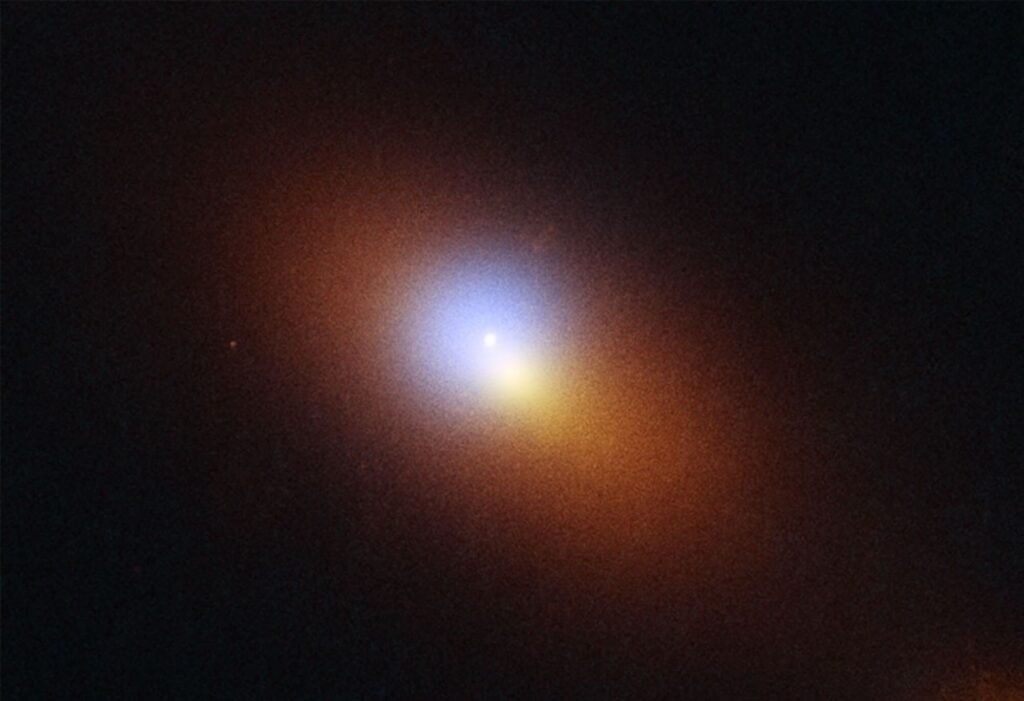
A Glimpse of a Hidden Population
This finding might be just the tip of the iceberg. If rogue black holes like this one are more common than we think, AT2024tvd could mark the beginning of a new era in black hole astrophysics.
With future surveys like the Vera C. Rubin Observatory’s Legacy Survey of Space and Time (LSST) poised to scan the entire southern sky in unprecedented detail, astronomers are hopeful that many more offset TDEs will be discovered. Such findings could finally illuminate a long-hypothesized population of wandering supermassive black holes, helping us understand how galaxies evolve, merge, and sometimes eject their most massive residents.
The Future of Cosmic Forensics
For now, “Space Jaws” has returned to the shadows, full for the next few eons. But the cosmic implications linger. Not only does this event confirm the existence of rogue black holes, but it also challenges assumptions about galactic dynamics, mergers, and black hole growth.
This lone predator in the dark reminds us that the universe is far from tame—and that its monsters don’t always stay where we expect them.
Reference: Yuhan Yao et al, A Massive Black Hole 0.8 kpc from the Host Nucleus Revealed by the Offset Tidal Disruption Event AT2024tvd, arXiv (2025). DOI: 10.48550/arxiv.2502.17661
